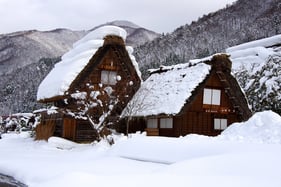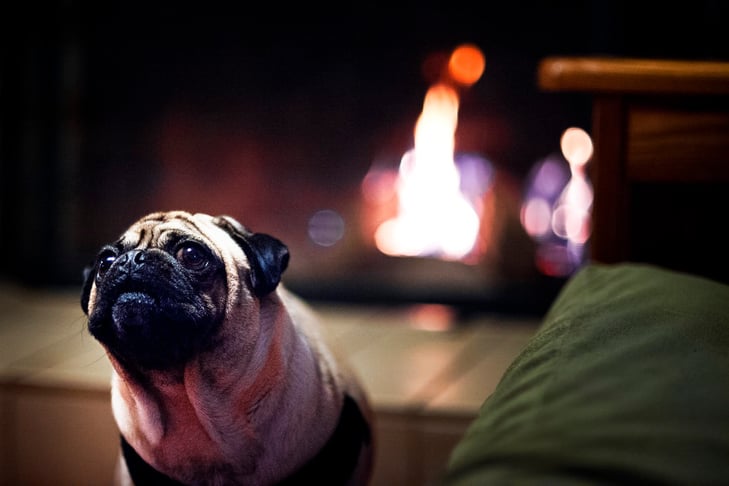For a senior living in Cincinnati on a fixed income, home heating bills can be a source of financial uncertainty in the winter. One extended cold snap can blow the budget for a month or more.
You know you can always pile on more clothes or blankets to stay warm in the winter. But we bet you didn't know about these other tips and tricks to keep your residence feeling toasty without bumping up that thermostat.
1. Reverse your ceiling fan
You know that warm air rises and cool air sinks. But you might not know that most modern ceiling fans have a switch on the side that will reverse the direction of the fan’s spin.
In the summer, you want your fan to be spinning counterclockwise to draw cooler air up from the floor. In the winter, though, you should reverse the fan’s direction to clockwise, which causes it to push warm air down from the ceiling. Run it at its lowest setting to conserve energy; it’s enough to get the job done.
Keeping the ceiling fan on will of course eat into your energy savings a little bit, but it’s far cheaper than turning up the furnace!
2. Block door drafts
A surprisingly large amount of cold outside air can sneak into your home through spaces between doors and floors. If you block those gaps, though, you can shut down the cold air current and improve your home’s heat retention.
 You can buy insulated draft blockers at many home goods retailers or at any local hardware store. They’re designed with a thin section that can easily slide under your door, while holding an insulated foam section against the inside gap. That blocks the cold air from coming in and keeps your place toasty.
You can buy insulated draft blockers at many home goods retailers or at any local hardware store. They’re designed with a thin section that can easily slide under your door, while holding an insulated foam section against the inside gap. That blocks the cold air from coming in and keeps your place toasty.
Or, if you have an extra pool noodle, a bolt of fabric and a little sewing skill, you can make your own door seal. Click here to watch a video that will show you how to do it.
3. Install heavier curtains
A lot of heat transfer occurs around windows. If your windows are covered by thin drapes, or have no drapes at all, drafts have free reign.
Hang heavier curtains during the winter, or tack up blankets around the windows. In the daytime, if it’s sunny, take them down and allow sun to warm the air in your home. At night, draw the curtains or tack the blankets back up to help retain the daytime heat.
4. Bake
What happens when you bake? The oven warms your home a bit, right? Bake some cookies! You’ll have a treat to enjoy, or gifts to give to friends and family members.
A quick word of caution: NEVER, EVER use your home’s oven as a primary heat source. That’s not what it was designed for; doing so is extraordinarily dangerous.
5. Cuddle
If you have a significant other, or a furry canine or feline friend, there’s warmth in numbers. Cuddling together helps you both share and conserve body heat.
Curl up together on the couch or in bed. Layer blankets or quilts over yourselves — heaviest on the bottom, thinnest on the top. This will help insulate the two of you and trap all that body heat in with you.
6. Install extra wall insulation, insulated windows and insulated storm doors
A well-insulated home will stay warmer, longer in the winter and cooler, longer in the summer. It might be worth taking out a home equity line and getting estimates from reputable contractors.
Installing extra wall insulation and insulated doors and windows can pay for itself in the long run, by lowering your energy bills year-round, improving your home’s curbside appeal and increasing your home’s value.
Use these tips to stay warm without turning up the furnace this winter.
Beat the cold and keep energy bills from busting your retirement budget. Just remember to be careful about open heat sources like ovens and fireplaces. Be conscientious about safety and don’t compromise your health.













